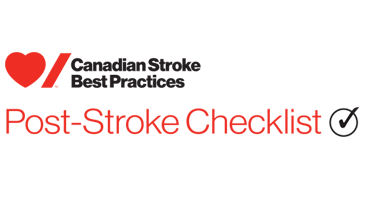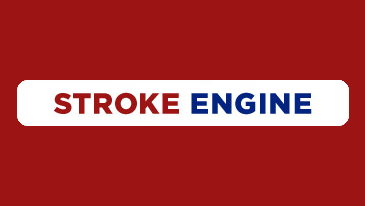Guidance on Stroke Best Practices During the COVID-19 Pandemic
The COVID-19 pandemic has emerged as one of the biggest public health crises of our time. Health systems are responding – and shifting their approaches to stroke care in light of personal precaution, physical isolation and other community measures.
Stroke Best Practice Guidance During the COVID-19 Pandemic (CNSJ) is meant to support evidence-based stroke care in these challenging times. Based on expert opinion and early shared experiences, the Guidance is based on two principles: 1) stroke remains a medical emergency and should be treated as such and 2) stroke care is highly effective.
Ensuring best practice stroke care is essential, otherwise the rate of recurrent stroke and ongoing functional, cognitive and social disabilities will rise and create a new burden on an already over-stressed system. Alternate care models complement existing stroke teams and processes, allowing continued access to stroke care for those who need it throughout and beyond the COVID-19 pandemic.
Highlights and key messages from our Guidance cover all aspects of the continuum: awareness, recognition and response, hyperacute stroke care, inpatient and stroke unit care, stroke rehabilitation, secondary prevention of stroke and tele-stroke.
Access videos, webinars, peer support, information and more!
- Coronavirus: the information you need is a centralized repository of patient and public-oriented COVID resources from Heart & Stroke
- 6 Key Facts about COVID-19
- COVID-19 Webinar Series: Heart and Stroke webinars and key messages to support patients and caregivers
- Video: Handwashing Technique for People with Stroke and a Weak/Flaccid Arm
- Visit our YouTube COVID-19 channel for all video resources
- 2020 Virtual Healthcare Checklist: This checklist provides tips and steps to optimize virtual healthcare sessions with healthcare providers for people with lived experience of stroke, heart conditions and vascular cognitive impairment
- CorHealth has developed a series of posters for Stroke Awareness Month with information for people with lived experience and caregivers:
- Calgary stroke program videos for self-management during COVID (Coming soon)
Some of the following tools were not developed by Canadian Stroke Best Practices however may be useful implementation resources for stroke care; their inclusion in this list does not imply actual or implied endorsement by Canadian Stroke Best Practices. The reader is encouraged to review these tools critically and implement them into practice based at their discretion.
- Coronavirus, Heart Disease and Stroke
- World Stroke Organization: Stroke Care and the COVID-19 Pandemic
- European Stroke Organization: Stroke Care During COVID-19 Pandemic
- American Stroke Association: Our Response to COVID-19
- Australia Stroke Foundation: Telehealth resources in response to COVID-19
- UK Stroke Association: Coronavirus and stroke
- CorHealth Ontario Stroke Resources
- CorHealth Stroke Awareness Month Poster – Thank You
- 2020 Virtual Healthcare Toolkit
Some of the following tools were not developed by Canadian Stroke Best Practices however may be useful implementation resources for stroke care; their inclusion in this list does not imply actual or implied endorsement by Canadian Stroke Best Practices. The reader is encouraged to review these tools critically and implement them into practice based at their discretion.
Taking Action for Optimal Community and Long-Term Stroke Care (TACLS) was developed to support healthcare providers working with people who have had a stroke to help them achieve optimal functional independence and enable participation in meaningful activities. In light of COVID-19, healthcare resources are being shifted to accommodate and support the needs of our communities. Some healthcare providers who don’t typically work with individuals who have had a stroke may now find themselves working with this population.
In response, Heart and Stroke has updated TACLS to align with the most current Stroke Best Practice Guidelines. TACLS Acute, is a condensed version of the full TACLS document, and contains essential information and education for healthcare workers in the acute care setting.
Stroke care involves a TEAM effort. The team is there to support you, even if they are not physically on the same unit where you are working. Make sure you reach to your team with any questions, as to not compromise the safety or recovery of the individuals you are working with.
There may be times when the information in this resource differs from the instructions or care plan developed by the stroke team or standard protocols within your organization. In these cases, always follow the direction from your team, the individual care plan, and your employer.
Taking Action for Optimal Community and Long-Term Stroke Care (TACLS) was developed to support healthcare providers working with people who have had a stroke to help them achieve optimal functional independence and enable participation in meaningful activities. In light of COVID-19, healthcare resources are being shifted to accommodate and support the needs of our communities. Some healthcare providers who don’t typically work with individuals who have had a stroke may now find themselves working with this population.
In response, Heart and Stroke has updated TACLS to align with the most current Stroke Best Practice Guidelines.
Stroke care involves a TEAM effort. The team is there to support you. Make sure you reach out to your team with any questions, as to not compromise the safety or recovery of the individuals you are working with
There may be times when the information in this resource differs from the instructions or care plan developed by the stroke team or standard protocols within your organization. In these cases, always follow the direction from your team, the individual care plan, and your employee.





